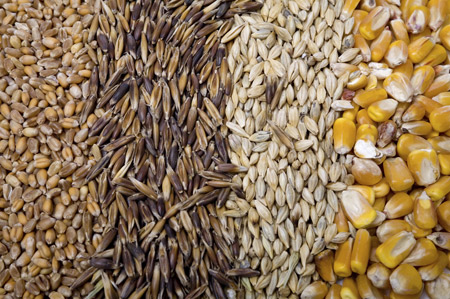Weak wheat results prompt futher Russia downgrades
Category: Grains
 (AgriMoney) – Weak yields from eastern farms, seen as at lower risk of damage from dryness, prompted SovEcon to ditch the last hopes of Russia’s wheat crop beating that of the infamous drought year of 2010, and as the farm ministry cut its harvest hopes too.
(AgriMoney) – Weak yields from eastern farms, seen as at lower risk of damage from dryness, prompted SovEcon to ditch the last hopes of Russia’s wheat crop beating that of the infamous drought year of 2010, and as the farm ministry cut its harvest hopes too.
Separately, US officials also cautioned over dryness in the Black Sea region for a second successive season threatening barge traffic along the Danube, an important route for carrying eastern European grain exports to sea ports.
SovEcon narrowed its forecast for the Russian wheat crop to 39m tonnes, from a range of 39m-41m tonnes, and representing a decline of some 70% year on year.
The revision also meant abandoning the last hopes that the harvest might beat the 40.5m tonnes in 2010, when a poor harvest prompted the government to impose a grain export ban.
Official downgrade
The downgrade came as Nikolai Fyodorov, Russia’s farm minister signalled a downgrade to 75m tonnes, from 75m-80m tonnes, in his forecast for the total grains harvest.
“Clearly it will not be 80m tonnes, it is more likely 75m,” he told a television interview.
And even that figure is “still relatively optimistic”, said Andrey Sizov Jr, the managing director of SovEcon, which pegs the harvest at 70m tonnes.
The consultancy’s downgrade to hopes for wheat reflected crop results from the Urals and Siberia areas, later harvesting regions, where weak yields had dashed hopes of them avoiding the drought damage already highlighted in southern Russia.
Price reversal
“We had hoped that these areas were not affected by drought so badly, but it looks like they have been affected quite significantly,” Mr Sizov told Agrimoney.com.
In Siberia, wheat yields have fallen some 35% to 0.85 tonnes per hectare, and in the Urals by 40% to 0.9 tonnes per hectare.
The disappointing results appear to have been reflected in prices which, unusually, have, gained a premium over those further west, where values are usually supported by closer proximity to ports, and export demand.
At some $280 a tonne, prices in Siberia, home to several large milling groups, are at a premium of some $20 a tonne over those in the black earth region, rather than the typical discount of some $30-40 a tonne.
“I do not think this premium will last for long,” Mr Sizov said, citing also the prospect of further sales of the 5m tonnes of government intervention stocks of wheat, of which some 40% are held in Siberia.
Danube disruption
Separately, US Department of Agriculture staff in Bucharest highlighted the impact of the lack of rainfall in the broader Black Sea region in lowering water levels on the Danube, a lifeline for bringing exports from eastern Europe to maritime ports.
The river is flowing into Romania at a volume of 2,900 cubic metres per second, 40% below average levels for August and lowering river levels below 2m in some stretches.
While there is the chance of a recovery in Danube water levels to 80% of average in the autumn, assuming normal rains upstream, levels in Romanian tributaries look like staying 30-50% below average even assuming a return to typical rainfall patterns.
The comments echo those from the US, where low water levels prompted the closure of an 11-mile stretch of the Mississippi this week for dredging, standing 93 vessels, including grain barges.




